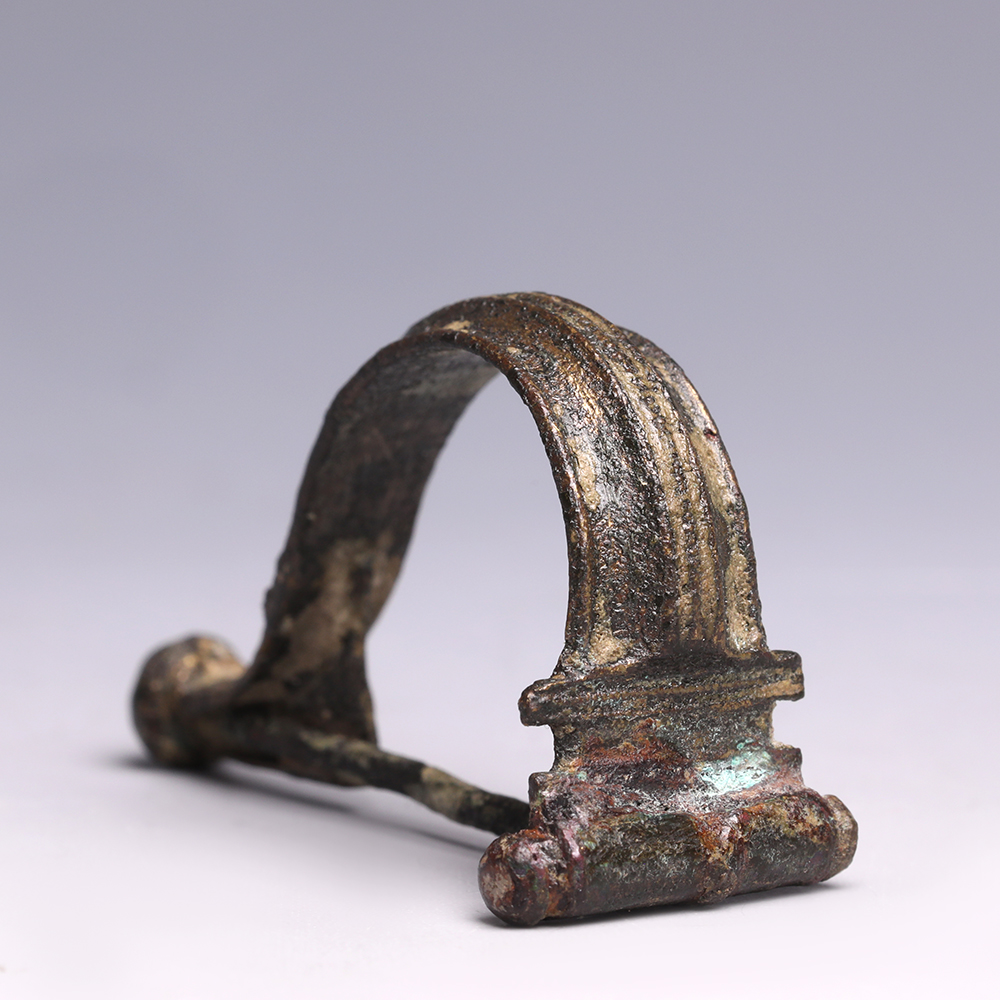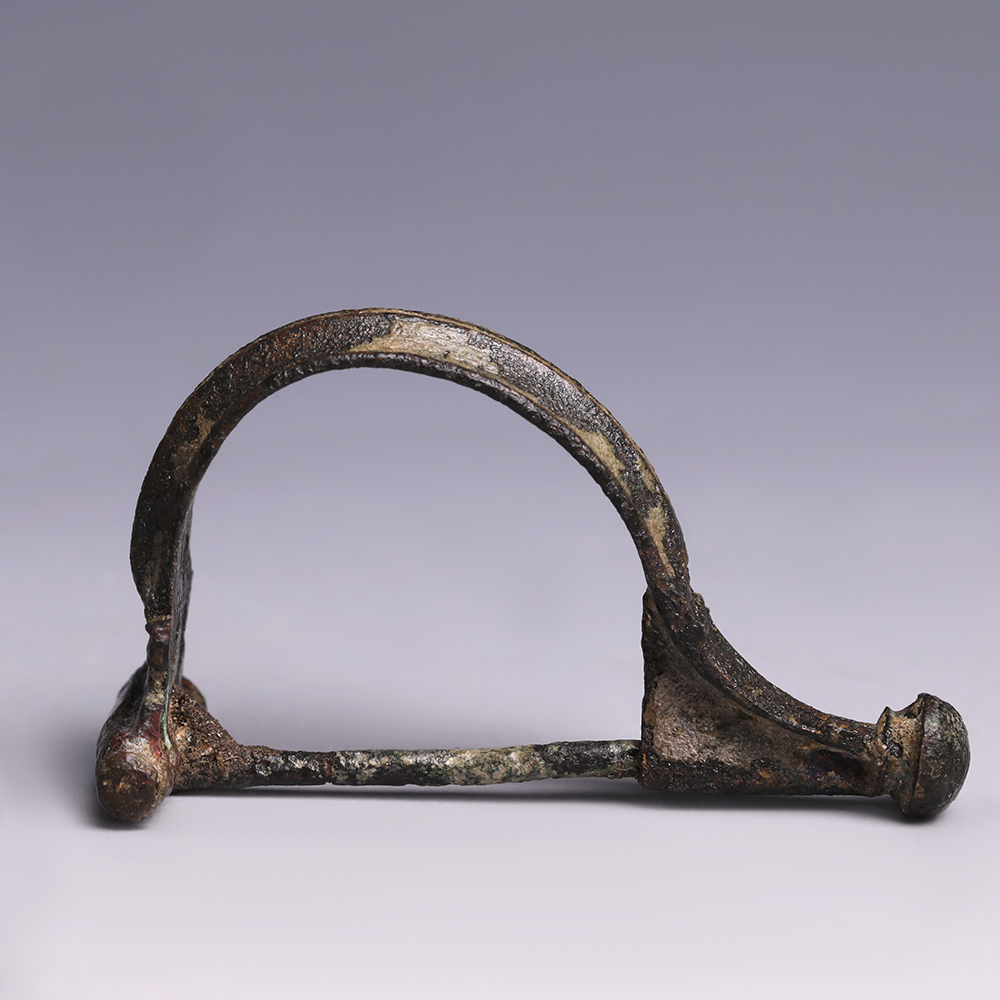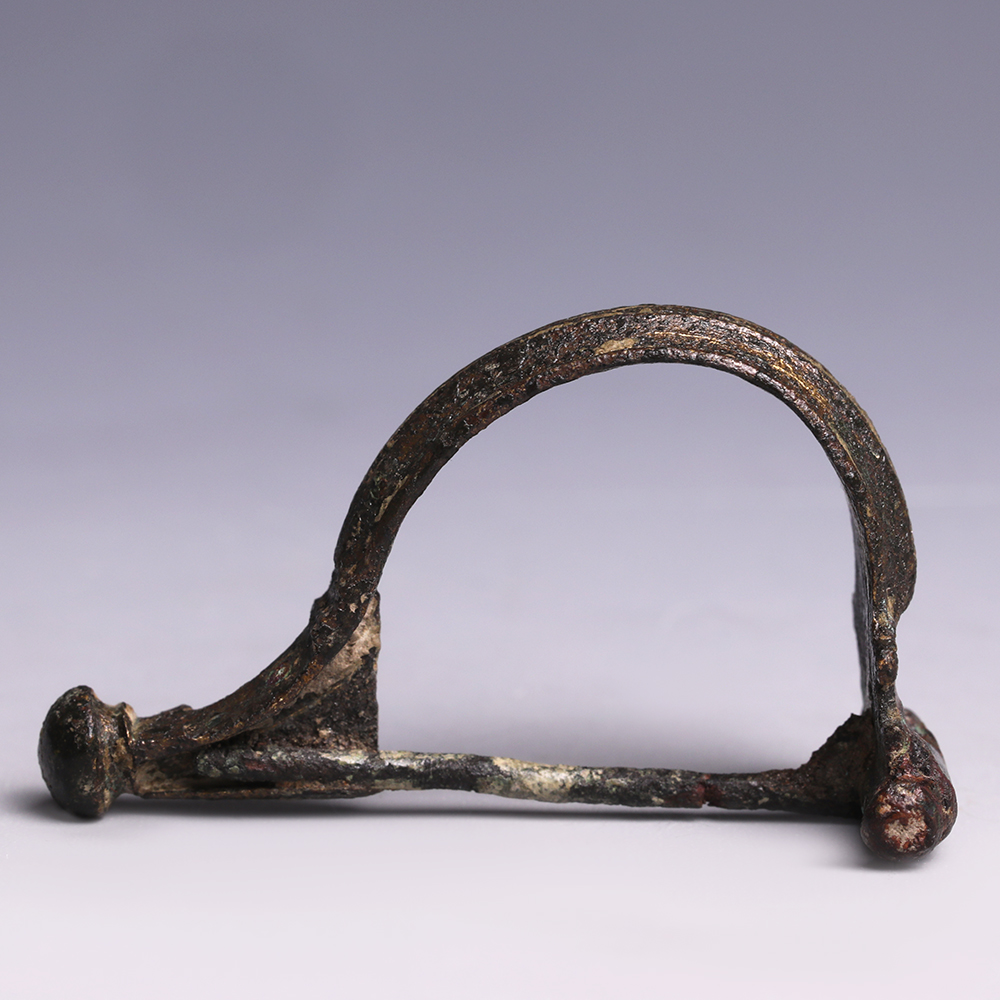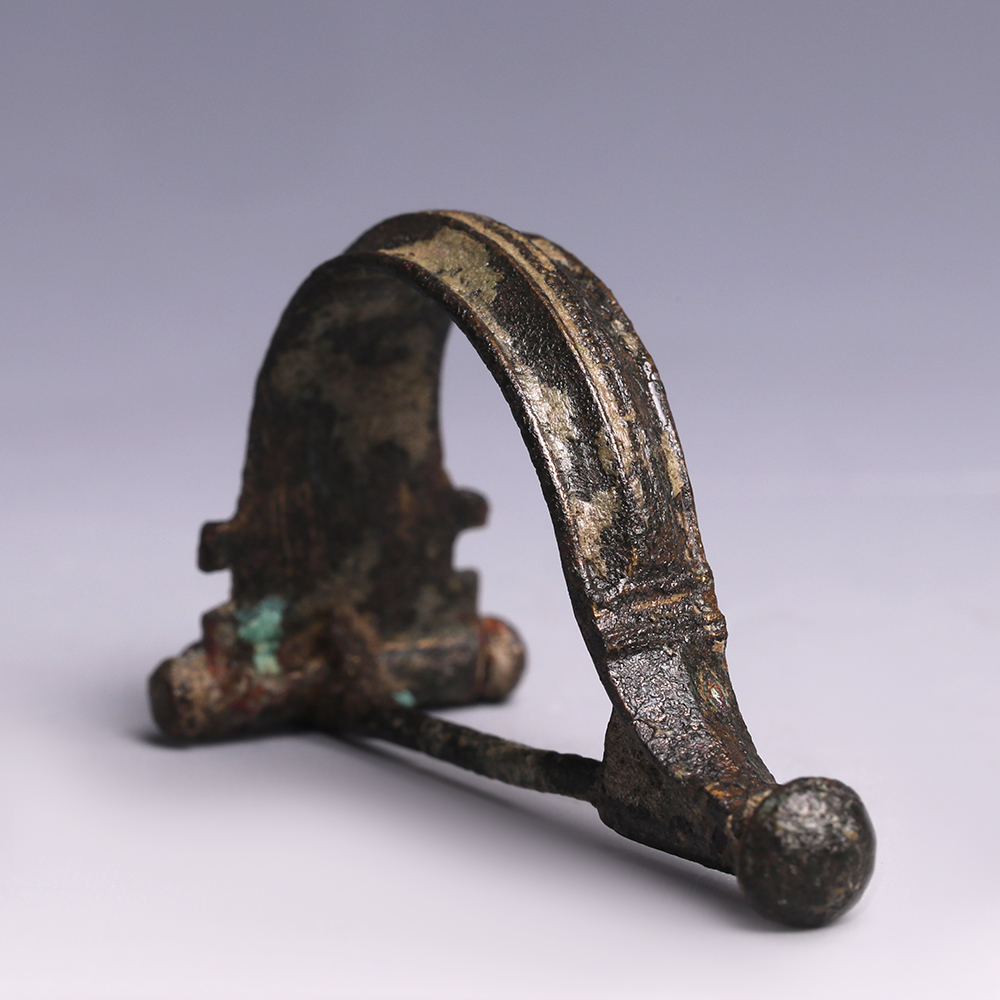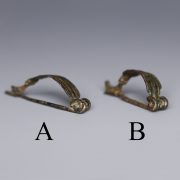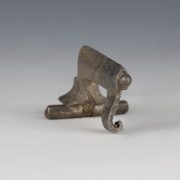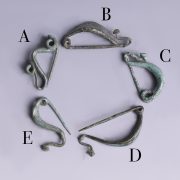Fibulae or brooches were originally used in Ancient Greece and in the Roman Empire for fastening garments, such as cloaks or togae. The fibula designs developed into a variety of shapes, but all were based on the safety-pin principle. The Aucissa fibula originated from the Gaul region and spread into Britain with the Roman occupation. Many recovered Aucissa fibulae have the word “AVCISSA” incised to the head, hence the label, and thought to be the name of a workshop where many were produced. Other examples found do feature other decoration, including incised linear or zig-zag motifs. The popularity and use declines from around AD 60, although British workshops did also imitate the type. This particular example, whilst not being stamped with the ‘AVCISSA’ makers mark is a particularly fine example. It has been documented as a river find, so possibly the Thames.
Romano-British Aucissa-Type Fibula
$118.18
A fine Romano-British bronze fibula, known as the Aucissa type. It features a thin and wide long bow, highly arched into a D-shaped profile. The bow features a decorated central rib with cavetto moulding and narrows at its foot, also known as the leg. This has been decorated with two horizontal ridges at its terminals and a slightly raised central rib. A rounded knob has been applied to the end of the leg. To the front of the bow, the piece widens into a rectangular, flat plate, decorated with a similar cavetto moulding. The plate features two perforations, known as eyes to each side. The end of the plate curls upwards around the axis pin. The pin itself is circular and narrows to a point, which rests within a triangular, undecorated catch plate.
Provenance: From a Surrey gentleman's collection (D.G.), purchased on the London Art market from ADA member, 1990s - onwards.
Condition: Fine condition. Pin is now fixed; patination remains on the surface.
SOLD
| Weight | 10.6 g |
|---|---|
| Dimensions | L 4.5 x W 2 x H 2.6 cm |
| Culture | |
| Region | |
| Metal |
